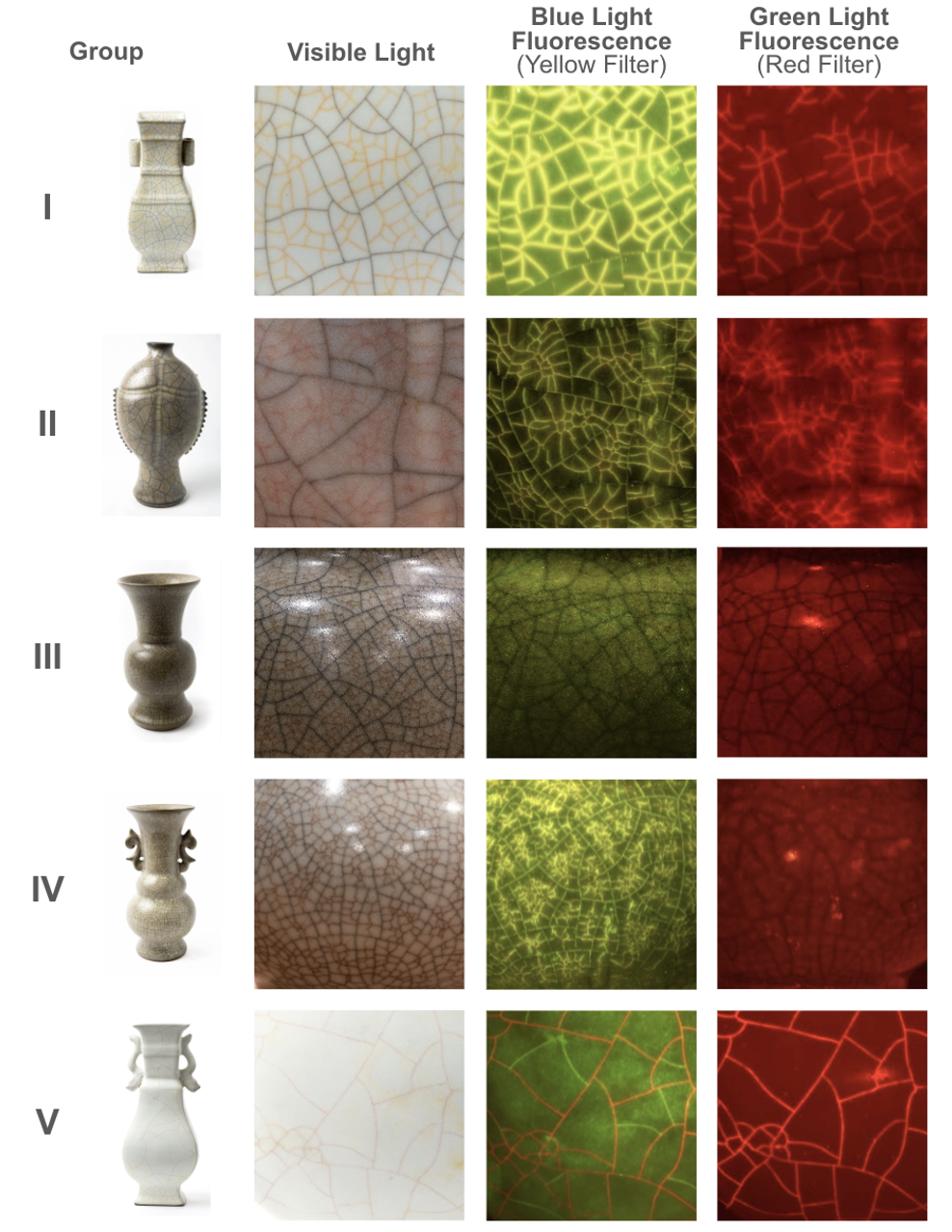VOLUME 18 NUMBER 2 (July to December 2025)

SciEnggJ. 2025 18 (2) 240-249
available online: 29 July 2025
DOI: https://doi.org/10.54645/2025182OVY-71
*Corresponding author
Email Address: olivera@biology.utah.edu
Date received: 22 June 2024
Dates revised: 15 December 2024; 31 May 2025
Date accepted: 30 June 2025
ARTICLE
Characterizing Song Dynasty ceramics using molecular biology fluorescence technology
USA
2Independent Researcher, Salt Lake City, Utah, USA
We have used a new technology, fluorescent imaging, to examine Song Dynasty ceramics, renowned for their exquisite craftsmanship and unique crackle patterns. By capturing high-resolution images of microstructural features and crackle networks that are illuminated by specific wavelengths of light, we have been able to discern differences that seem to distinguish between products of the Northern and Southern Song dynasty periods; these can be further divided by the patterns into five major types of Ge-like ware. Fluorescence technology thus offers a relatively simple, inexpensive and non-invasive method for the characterization and study of ancient ceramic vessels. In addition, analysis of the emitted fluorescence provides insights into the composition and distribution of glaze materials that are not revealed by other methods, deepening our understanding of historical craftsmanship and technological innovation.
© 2025 SciEnggJ
Philippine-American Academy of Science and Engineering